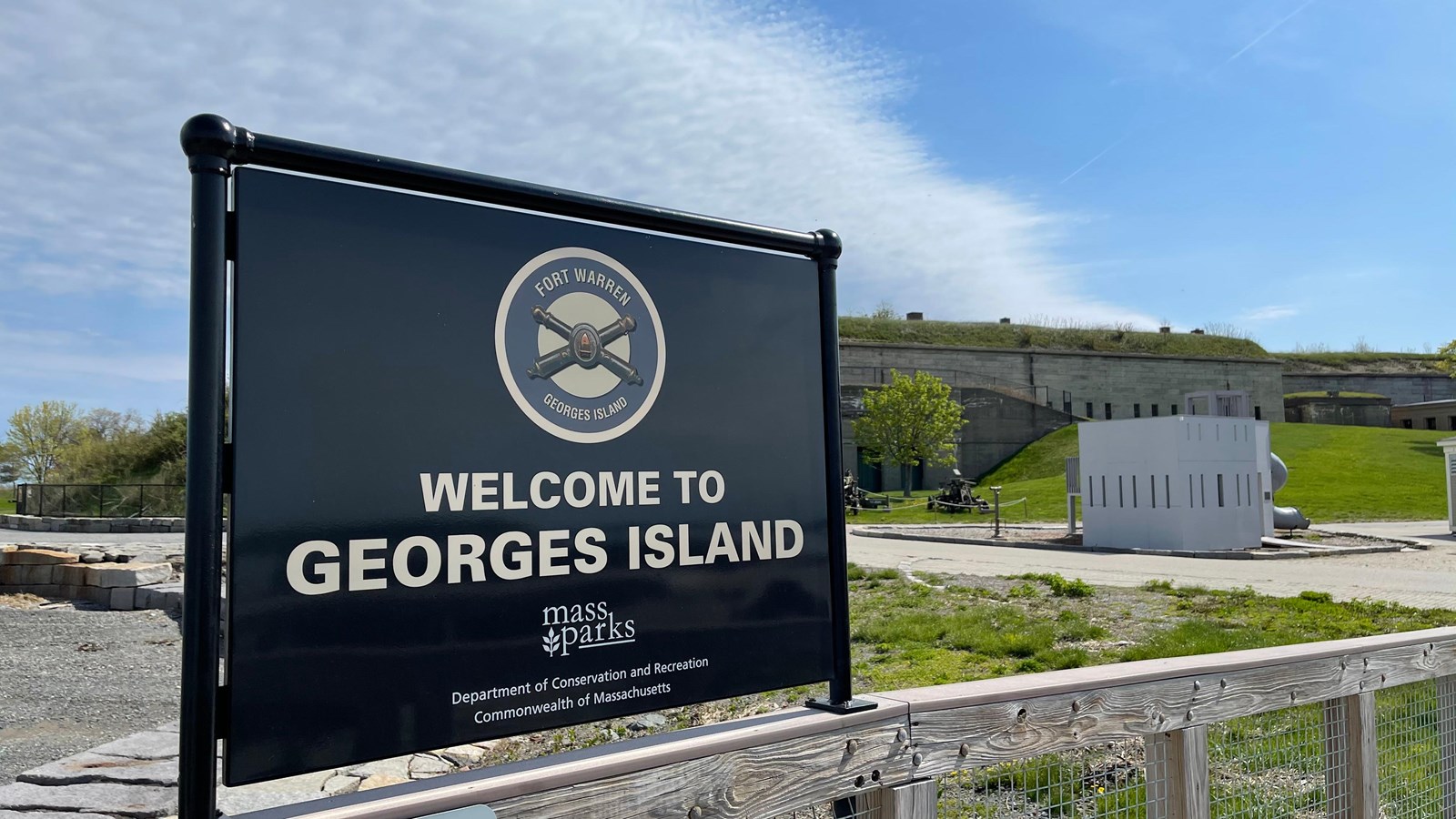Last updated: January 16, 2025
Place
Georges Island

BHN/B. Knotts
Benches/Seating, Dock/Pier, Ferry - Passenger, First Aid Kit Available, Historical/Interpretive Information/Exhibits, Information, Information - Maps Available, Information - Ranger/Staff Member Present, Junior Ranger Activity, Junior Ranger Booklet Available, Picnic Shelter/Pavilion, Picnic Table, Restroom, Scenic View/Photo Spot, Water - Drinking/Potable
Located seven miles from downtown Boston, this 53-acre island is home to Fort Warren, a National Historic Landmark. Although now owned and operated by the Massachusetts Department of Conservation and Recreation, Georges Island once provided a strategic location for defending the port of Boston.
Georges Island, like other islands in the harbor, first served as a seasonal fishing site for the Indigenous people in the area. They lived on the islands in the summer and moved inland in the winter.
The island's first use as a fortification came during the American Revolution, when the French fortified the island in support of the colonists. Here, they placed cannons upon the hill overlooking the harbor entrance.1 Throughout the 1800s, all ships entering Boston had to pass by Georges Island because of its location along two major shipping channels, Nantasket Roads and The Narrows. Recommendations to properly fortify the island came as early as 1808 but went ignored until after the War of 1812.
The federal government purchased the island in 1825 and started construction on the fortification in the 1830s as part of an improved system of U.S. Coastal fortifications called the Third System.2 Named for Dr. Joseph Warren, Major General of the Massachusetts Militia and a casualty at the Battle of Bunker Hill, Fort Warren served primarily as a training camp for most of 1861. Some of the first soldiers sent to Fort Warren received orders to finish cleaning left-over construction debris. This included soldiers of the of Second Battalion of Infantry, later the Twelfth Massachusetts volunteers, who sang while they completed this monotonous task, and it is from them that the song "John Brown’s Body" originated.3
Fort Warren later became a prison for Confederate soldiers, sailors, and political leaders during the US Civil War. Allowed to walk the parade grounds, read newspapers, and receive goods from Boston, those imprisoned at Fort Warren received relatively good treatment. The treatment can in large part be contributed to Colonel Justin Dimick, who commanded the Fort from October 1861 to 1863 and ensured the wellbeing of prisoners.4
Around 2,300 prisoners entered Fort Warren during the Civil War. Most did not stay for very long due to the prisoner exchange system, especially in the early days of the war. Despite several escape attempts, no one successfully escaped Fort Warren. One group even made it as far as Maine, before being recaptured and taken back.5
Fort Warren had several high-profile prisoners, including General Richard S. Ewell and Alexander Stephens, the Vice President of the Confederacy. Stephens, brought to Fort Warren in May of 1865, was first in solitary confinement in a basement casemate before being moved to an upper casemate. He wrote in his diary shortly after being released from solitary by saying,
I am allowed to go in out at pleasure, and walk the grounds when I choose, between sunrise and sunset; see any person in my family or any of my personal friends... in other words I am simply put on parole in the Fort.6
Fort Warren underwent further modifications during the Spanish-American War, World War I, and World War II. After the military decommissioned the fort in 1950, the Commonwealth of Massachusetts purchased the island in 1958.
Construction of the fort reshaped the island’s original drumlin landform. Shade and fruit trees were planted over the years, and staghorn sumac and wildflowers spread naturally. Today, red-winged blackbirds and swallows inhabit the island year-round, while owls, hawks, and shore birds occasionally visit during their annual migrations.7
Learn More...
Footnotes:
- Boston Harbor Islands National and State Park, “Island Facts: Georges Island," National Park Service, accessed November 2022; Olmsted Center for Landscape Preservation, Cultural Landscape Report: Boston Harbor Islands National & State Park, Volume 1: Historical Overview (Boston: National Park Service, 2017), 83-86.
- Olmsted Center for Landscape Preservation, Cultural Landscape Report, Volume 1: Historical Overview, 89-93.
- Jay Schmidt, Fort Warren: New England’s Most Historic Civil War Site (Amherst: UBT Press, 2003), 17-30.
- Schmidt, 31-42.
- Schmidt, 63-71.
- Schmidt, 51-58.
- Boston Harbor Islands National and State Park, “Island Facts: Georges Island."
